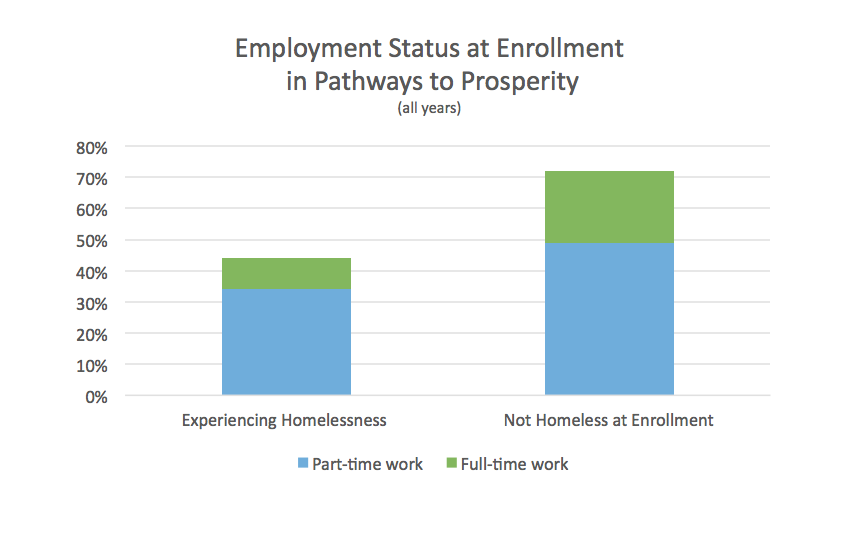Job seekers who experience homelessness
7/12/2017 12:00:00 PM
Angelina Chapin describes this not-uncommon scenario from her youth, “I was carpooling to work when we passed a homeless man with a cardboard sign on the side of the road. ‘Get a job!’ belted one of my colleagues out the window, who up until that point I had had a crush on.”
The Minnesota Statewide Homeless Survey, conducted every three years by Wilder Research, dispels the myth that people experiencing homelessness are not participating in the workforce; in fact, 30 percent of adults and 42 percent of youth were working at the time of the survey.
Many DEED programs collect information on homeless status at the time of enrollment, but not during the period of participation. Some programs serve a relatively high number of participants experiencing homelessness, for example Pathways to Prosperity. Other programs, such as the Dislocated Worker program, serve few. Of the over 18,000 total participants included in the Uniform Outcome report card for July 2016-May 2017, 829 individuals (4.6 percent) reported being homeless at the time of their enrollment in the program. This is an increase from the previous year, during which 417 individuals (2.1 percent) reported being homeless. This may reflect increased focus on collecting this information – or may be due to other reasons. Homeless status is self-reported and likely undercounts the actual number, including some whom may not even consider themselves to be homeless in situations like couch-hopping or sleeping in a car.
Participants in Pathways to Prosperity were often employed prior to program enrollment, but at different rates that correlate with homeless status. Forty-four percent of participants experiencing homelessness were working prior, compared to 72 percent for those not experiencing homelessness. However, part-time work makes up a larger percent of those employed for people who are experiencing homelessness (76 percent) versus those not (68 percent).

Outcomes also differ for participants in Pathways to Prosperity based on their reports of homeless status at enrollment. People experiencing homelessness are less likely to complete training (50 percent compared to 66 percent). Likewise, the duration of participation in programs varies, from two months for individuals experiencing homelessness compared to five months for those not reporting homelessness at enrollment. This trend of participation relating to homeless status appears over other programs as well.
In Pathways to Prosperity, 68 percent of people experiencing homelessness are working the first quarter after exit, compared to 82 percent of non-homeless participants. However, the limited data on people who have exited at least three quarters ago show that after exit, only 28 percent of people experiencing homelessness have maintained consistent employment, and of those, all have only part-time work. As additional data becomes available with time, it will be important to look at these mid-term outcomes and explore what it would take for participants to maintain employment.
Contributing writer Carrie Marsh is an analyst with the Performance Management team at DEED.
economy
workforce
unemployment